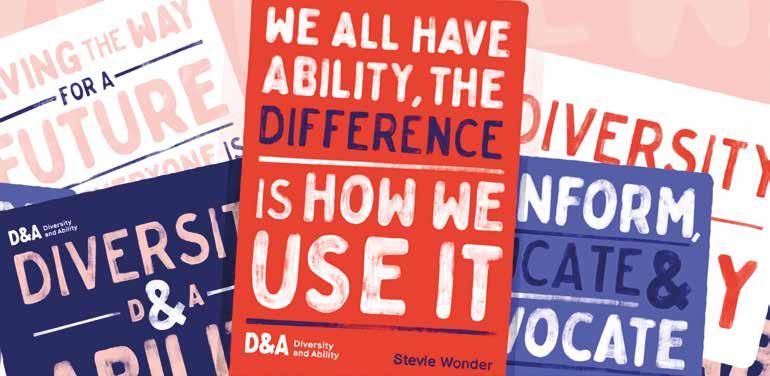Final word
‘Given crutches at the end of a marathon’
THE UK has one of the most progressive systems in the world to support disabled students in higher education and is something we can be proud of. The Disabled Students’ Allowance (DSA) facilitates wraparound, individualised support – designed to level the playing field and ensure disabled students can fully participate in university life.
Fact file
Atif Choudhury is chief executive of Diversity and Ability, a multiaward-winning disabled-led social enterprise which supports students, organisations and social justice projects to create inclusive cultures. Visit diversityand ability.com 50
Comprehensive support needed much earlier But is this too little, too late? Speaking from my own lived experience of dyslexia and childhood learning isolation, for many disabled students like me who struggled throughout primary and secondary education, this can feel like being given a pair of crutches at the end of a marathon. Many disabled and neurodiverse students won’t get the chance to realise their true potential and attend university without the right support beforehand. What if comprehensive support was made available to disabled students earlier in their education? Would we see higher attainment and aspirations, and increased participation of students, particularly from Black and ethnic minority communities? Anticipatory support, which ensures each student understands the way they learn, plays to their strengths and can thrive, is essential. Disability is one thing, disablement is another. The latter is heavily bound up in socio-economics, where a person’s class or culture, for example, may influence access to a diagnosis and follow-up support. We may be reinforcing a deficit model by underestimating the impact that shame and cultural exclusion has in preventing students from coming forward. The social model of disability highlights how the
educate Your magazine from the National Education Union (NEU)
barriers imposed by inaccessible systems, services and environments can dramatically alter a person’s ability to participate fully in society. Hidden disabilities, particularly learning differences and mental health conditions, often fly under the radar. An intersectional approach to inclusion, which considers different social, cultural and economic backgrounds, as well as the emotional barriers that must be overcome, needs to be centre-stage. Proactively anticipating the different needs of students is something educational professionals work tirelessly to do. But specialist, tailored, strategy-led support for individual students can also be of huge benefit. We may be missing enormous potential and hidden strengths by not proactively offering this kind of support to students of all ages. Celebrating and harnessing differences Children deserve to feel welcomed and valued by a society that understands the assets they can bring, something that they are all too often denied. At Diversity and Ability we see difference as something to be celebrated and harnessed. We signpost a plethora of free resources, and provide study skills support and assistive technology training to AS/A-level students. We strongly advocate the use of assistive technology in the classroom, believing that digital literacy is critical in our digital-by-default world. And it doesn’t have to be expensive; there are thousands of apps, open source software, and resources available to enhance a student’s learning. As long as these tools are carefully chosen and embedded into the student’s workflow, the possibilities are endless.











